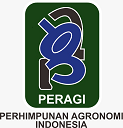The Nutrient Content of Eco-enzymes from Mixture of Various Fruit Peels
Abstract
Today, many institutions and individuals are paying attention to the development of technologies used in sustainable agriculture. One of the technologies is eco-enzyme that can be used as organic fertilizer. Several researchers have studied the use of eco-enzymes in agriculture, but studies on the nutrient content of eco-enzymes are still very limited. This research was conducted to investigate the nutrient content of two eco-enzyme preparations. The eco-enzymes were produced through the fermentation process of water, fruit peels, and molasses with a weight ratio of 10 : 3 : 1. Fruit peels used for Eco-enzyme A were banana, melon, watermelon, orange, and pineapple peels, while for Eco-enzyme B were banana, mango, watermelon, orange, and pineapple peels. The fermentation period for Eco-enzyme A was seven months, while for Eco-enzyme B was eight months. The results of the analysis showed that the two eco-enzymes contained various nutrients, both macro (C, N, P, K, Mg, Ca) and micro (Mn, Zn, B, Fe, Cu) ones, that were consistently higher in Eco-enzyme A. Both eco-enzymes were acidic, where the pH of Eco-enzyme A and B were 3.95 and 3.50, respectively. The data obtained were expected to be a basic reference for further research on eco-enzymes.
Keywords
Full Text:
PDFReferences
Aguilar, C. N., Hernández-Almanza, A., Sabu, A., Loredo, A., Sudhakaran, S., Davila-Medina, D., Morales-Martínez, T. K., Sepúlveda-Torre, L., Sugathan, S., & Teixeira, J. A. (2019).
Microbial Technology: Advances and Challenges. In M. L. Chavez-Gonzales, N. Balagurusamy, & C. N. Aguilar (Eds.), Advances in Food Bioproducts and Bioprocessing Technologies (1st ed., pp. 3–25). CRC Press. https://doi.org/10.1201/9780429331817-1
Arohman, D. F., Priyadarshini, R., & Santoso, S. B. (2023). Pengaruh jenis cacing dengan komposisi media bahan baku batang pisang, kotoran sapi dan cocopeat terhadap kandungan unsur kimia vermikompos. Agro Bali : Agricultural Journal, 6(3), 711–723. https://doi.org/10.37637/ab.v6i3.1232
Badan Standardisasi Nasional. (1995). SNI 01-3743-1995. Jakarta.
FAO. (2020). World Food and Agriculture - Statistical Yearbook 2020. In World Food and Agriculture - Statistical Yearbook 2020. Food and Agriculture Organization of the United Nations. https://doi.org/10.4060/cb1329en
Galintin, O., Rasit, N., & Hamzah, S. (2021). Production and characterization of eco enzyme produced from fruit and vegetable wastes and its influence on the aquaculture sludge. Biointerface Research in Applied Chemistry, 11(3), 10205–10214. https://doi.org/10.33263/BRIAC113.1020510214
Ginting, N., & Mirwandhono, R. E. (2021). Productivity of turi (Sesbania grandiflora) as a multi purposes plant by eco enzyme application. IOP Conference Series: Earth and Environmental Science, 912(1). https://doi.org/10.1088/1755-1315/912/1/012023
Gokulan, K., Khare, S., & Cerniglia, C. (2014). Metabolic Pathways: Production of Secondary Metabolites of Bacteria. Encyclopedia of Food Microbiology: Second Edition, 561–569. https://doi.org/10.1016/B978-0-12-384730-0.00203-2
Hasanah, Y., Ginting, J., & Syahputra, A. S. (2022). Research article role of potassium source from eco enzyme on growth and production of shallot (Allium ascalonicum l.) varieties. Asian Journal of Plant Sciences, 21(1), 32–38. https://doi.org/10.3923/ajps.2022.32.38
Indonesian Law of Sustainable Agriculture Cultivation System, Law of the RI No. 22 , 1-77 (2019). https://peraturan.bpk.go.id/Details/123688/uu-no-22-tahun-2019
Manurung A. E. (2021). Pengaruh Konsentrasi Eco Enzyme dan Dosis Pupuk Kandang Ayam Terhadap Pertumbuhan dan Produksi Tanaman Selada (Lactuca sativa L). [Skripsi]. Medan: Fakultas Pertanian, Universitas HKBP Nommensen.
Munir, N. F., Malle, S., & Huda, N. (2021). Karakteristik Fisikokimia Ekoenzim Limbah Kulit Jeruk Pamelo (Citrus maxima (Burm.) Merr.) dengan Variasi Gula. Prosiding Semnas Politani Pangkep “Sustainability and Environmentally of Agricultural System for Safety, Healthy and Security Human Life,” 2, 631–637. https://ojs.polipangkep.ac.id/index.php/proppnp/article/view/115
Novianto, N. (2022). Response Of liquid organic fertilizer eco enzyme (EE) on growth and production of shallot (Allium ascalonicum. L). Jurnal Agronomi Tanaman Tropika (Juatika), 4(1), 147–154. https://doi.org/10.36378/juatika.v4i1.1782
Nurlatifah, I., Agustine, D., & Puspasari, E. (2022). Production and characterization of eco-enzyme from fruit peel waste. Proceedings of the 1st International Conference on Social, Science, and Technology, ICSST 2021, 1–7. https://doi.org/10.4108/eai.25-11-2021.2318816
Oladipo, A., Enwemiwe, V., Ejeromedoghene, O., Adebayo, A., Ogunyemi, O., & Fu, F. (2022). Production and functionalities of specialized metabolites from different organic sources. Metabolites, 12(6), 1–19. https://doi.org/10.3390/metabo12060534
Permata, D. I., Arum, S., Tanuwidjaja, K. D., Evan, V., Wicaksono, A., & Mardikanto, A. (2022). The Future is Circular: Langkah Nyata Inisiatif Ekonomi Sirkular di Indonesia. Kementerian Perencanaan Pembangunan Nasional/Bappenas. https://lcdi-indonesia.id/wp-content/uploads/2022/08/The-Future-is-Circular.pdf
Rochani, A., Yuniningsih, S., & Ma’sum, Z. (2015). Pengaruh konsentrasi gula larutan molases terhadap kadar etanol pada proses fermentasi. Jurnal Reka Buana, 1(1), 43–48. https://jurnal.unitri.ac.id/index.php/rekabuana/article/view/645
Rochyani, N.-, Utpalasari, R. L., & Dahliana, I. (2020). Analisis hasil konversi eco enzyme menggunakan nenas (Ananas comosus ) dan pepaya (Carica papaya L.). Jurnal Redoks, 5(2), 135–140. https://doi.org/10.31851/redoks.v5i2.5060
Romelle, F. D., Ashwini, R. P., & Manohar, R. S. (2016). Chemical composition of some selected fruit peels. European Journal of Food Science and Technology, 4(4), 12–21. https://eajournals.org/ejfst/vol-4-issue-4-september-2016/
Sagar, N. A., Pareek, S., Sharma, S., Yahia, E. M., & Lobo, M. G. (2018). Fruit and vegetable waste: Bioactive compounds, their extraction, and possible utilization. Comprehensive Reviews in Food Science and Food Safety, 17(3), 512–531. https://doi.org/10.1111/1541-4337.12330
Samputri, H. A., Guniarti, G., & P.S., R. D. (2023). Pengaruh dosis POC kulit pisang dan guano terhadap pertumbuhan terong ungu (Solanum melongena L.). Agro Bali : Agricultural Journal, 6(2), 413–420. https://doi.org/10.37637/ab.v6i2.1172
Samriti, Sarabhai, S., & Arya, A. (2019). Garbage enzyme: A study on compositional analysis of kitchen waste ferments. The Pharma Innovation Journal, 8(4), 1193–1197. https://www.thepharmajournal.com/archives/?year=2019&vol=8&issue=4&page=19
Santosa, B., Wirawan, W., & Muljawan, R. E. (2019). Pemanfaatan molase sebagai sumber karbon alternatif dalam pembuatan nata de coco. Teknologi Pangan, 10(2), 61–69. https://doi.org/10.35891/tp.v10i2.1641
Sembiring, S. D. B. J., Ginting, N., Umar, S., & Ginting, S. (2021). Effect of eco enzymes concentration on growth and production of kembang telang plant (Clitoria ternatea L.) as animal feed. Jurnal Peternakan Integratif, 9(1), 36–46. https://doi.org/10.32734/jpi.v9i1.6491
Setyowati, N., Hardianto, N., Widodo, W., & Muktamar, Z. (2021). Leek (Allium fistulosum L.) growth and yield as affected by cow manure and guava waste liquid organic fertilizer. Agro Bali : Agricultural Journal, 4(3), 305–313. https://doi.org/10.37637/ab.v4i3.732
Singh, R., Kumar, M., Mittal, A., & Mehta, P. K. (2017). Microbial metabolites in nutrition, healthcare and agriculture. 3 Biotech, 7(15), 1–14. https://doi.org/10.1007/s13205-016-0586-4
Sistem Informasi Pengelolaan Sampah Nasional. (2021). Grafik Komposisi Sampah. Kementerian Lingkungan Hidup. https://sipsn.menlhk.go.id/sipsn/. [9 November 2022].
Srihardyastutie A. (2021). Pembuatan Eco Enzyme: Tinjauan dari Prinsip Dasar Proses Fermentasi. In. Tim PMEE Eco Enzyme Nusantara (Ed). Modul PMEE Alam, Diriku dan Eco Enzyme. p. 261-322.
Srihardyastutie A. & Rosmawati, A. (2023). Keajaiban Eco-Enzyme dari Sampah Menjadi Berkah. Makassar: Nas Media Pustaka.
Supriyani, Astuti, A. P., & Maharani, E. T. W. (2020). Pengaruh variasi gula terhadap produksi ekoenzim menggunakan limbah buah dan sayur. Seminar Nasional Edusainstek, 470–479. https://prosiding.unimus.ac.id/index.php/edusaintek/article/view/589
Suriadikarta, D. A., & Simanungkalit, R. D. M. (2006). Pendahuluan. In R. D. M. Simanungkalit, D. A. Suriadikarta, R. Saraswati, D. Setyorini, & W. Hartatik (Eds.), Pupuk Organik dan Pupuk Hayati (1st ed., pp. 1–10). Balai Besar Penelitian dan Pengembangan Sumberdaya Lahan Pertanian. https://agroinfotek.wordpress.com/wp-content/uploads/2011/04/pupuk-ooganik-dan-hayati.pdf
Tong, Y., & Liu, B. (2020). Test research of different material made garbage enzyme’s effect to soil total nitrogen and organic matter. IOP Conference Series: Earth and Environmental Science, 510, 1–6. https://doi.org/10.1088/1755-1315/510/4/042015
Vama, L., & Cherekar, M. N. (2020). Production, extraction and uses of eco-enzyme using citrus fruit waste: wealth from waste. Asian Jr. of Microbiol. Biotech. Env. Sc., 22(2), 346–351.
Wen, L. C., Ling, R. L. Z., & Teo, S.-S. (2021). Effective microorganisms in producing eco-enzyme from food waste for wastewater treatment. Applied Microbiology: Theory & Technology, 2(1), 28–36. https://ojs.wiserpub.com/index.php/AMTT/issue/view/amtt.v2i12021.1-36
Yuliandewi, N. W., Sukerta, I. M., & Wiswasta, I. G. N. A. (2018). Utilization of organic garbage as “eco garbage enzyme” for lettuce plant growth (Lactuca sativa L.). International Journal of Science and Research (IJSR), 7(2), 1521–1525.
https://doi.org/10.21275/ART2018367
Refbacks
- There are currently no refbacks.



























